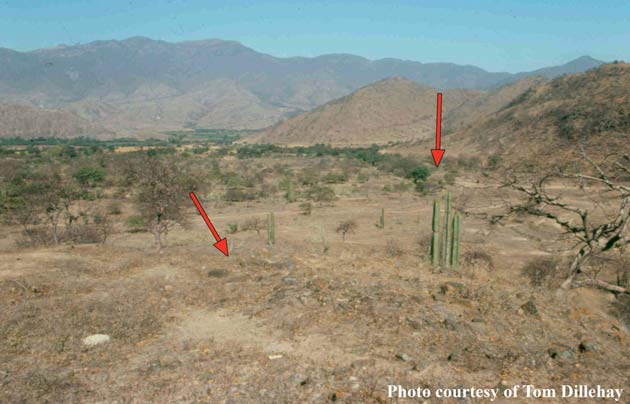Peruvian Canals Most Ancient in New World

Any archaeologist will tell you that agriculture is what really kick-started social development in the ancient world. So what about people who lived in arid climates? In Egypt and Mesopotamia they developed irrigation canals.
New discoveries suggest at least one group in the New World had the right idea too.
A team of researchers working in the Andean foothills of Peru has unearthed solid evidence of canals confirmed to be at least 5,400 years old. The find is the oldest of its kind anywhere in South America.
Led by anthropologist Tom Dillehay of Vanderbilt University, the scientists' work in Peru's northern Zana Valley exposed four canals almost certainly used for irrigation agriculture. While their location was originally discovered by Dillehay and his team in 1989, only in the most recent field season did the importance of the canals become apparent.
The canals range in size from 0.6-2.5 miles (1-4 kilometers) in length and were designed to slope downwards, relying on gravity to send water from an upper stream to the crop fields below. The layout essentially created artificial garden plots with fertile earth suitable for intensive agriculture.
It is this more concentrated form of cultivation that allowed societies to flourish, according to Dillehay.
What the canals encouraged in the Andes was a kind of co-op that allowed the burden of agriculture to be shared among everyone, the research demonstrated. As agricultural efficiency improved, more members of the group were freed to pursue other activities, the first crucial step towards civilization-building.
Get the world’s most fascinating discoveries delivered straight to your inbox.
Similarities between the irrigation techniques Dillehay discovered and those in Pharaonic Egypt or the kingdoms of Mesopotamia boil down to function, Dillehay said.
"These canals compare to the early canals in the Old World in the sense that they are simple gravitational contour canals that do not run long distances, built in areas where there was a rather easily managed hydrology course," he said.
The find follows on the heels of another recent canal discovery in Phoenix, Arizona. Ongoing work at a construction site near the city has uncovered 20 irrigation channels dating from the Hohokam Indian period, which spanned 1,500 years beginning in 300 B.C.
- Ancient Earth Drawings Found in Peru
- Elite Women Made Beer in Pre-Incan Culture
- Incan Words Tied Up In Knots
- The Map that Changed the World



